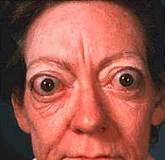Breast cancer screening is done with self-breast exam, physical exam...
HPV has been highly associated with cervical cancer.
Diagnosis of kidney stones include history, physical exam, U/A,...
In order to form urine the nephron must perform three major...
The glands that are responsible for the production of milk are called...
The glands that are responsible for the production of milk are called...
Benign prostatic hyperplasia (BPH) can cause urinary obstruction and...
Symptoms of kidney stones include hematuria, fever, nausea,...
Chemical messengers released by the endocrine glands are called...
Some of the hormones produced in the ANTERIOR pituitary include ACTH,...
The adrenal cortex produces cortisol as one of its hormones.
The prolonged use of Anabolic steroids may shutdown the hypothalamus...
Type II diabetes is characterized by insulin resistance,...
The adrenals are located on top of the kidneys.
Diabetes type 2 is considered a multifactoral disease
High cortisol levels are associated with stroke in overweight patients
These hormones control the gonads: LH, FSH .
Insulin and glucagon are produced by the ________.
The thyroid is located in the:
Painful urination, urinary frequency, nighttime urination, and...
The union of the sperm and ovum is known as _________
The 3 layers of the kidneys are the renal capsule, cortex, renal...
Diabetes type II is an autoimmune disease.
Gigantism is an excess growth hormone that occurs in:
Down syndrome can be confirmed with amniocentesis.
The following describes the recommended screening for prostate:
The adrenals are divided into 2 layers.
The process by which most of the material in the nephron moves back...
In Graves disease there is an overproduction of thyroid hormone.
A patient is diagnosed with premenstrual syndrome (PMS). You want to...
In homeostasis, the process that opposes or shuts down a stimulus is...
Loss of bone density is a common side effect of steroids
The gland is divided into anterior and posterior segments:
Prolactin is produced in the anterior pituitary.
A 32 year-old patient presents with painless vaginal bleeding. She is...
A condition where endometrial tissue escapes from the uterus is known...
Which of the following is associated with cervical cancer?
A pap smear should start at 17 years old or 2 years after first sexual...
Diabetes insipidus is an endocrine disorder characterized by too...
This gland is divided into anterior and posterior segments:
Which of the endocrine organs can effectively control the pituitary...
Diabetes type 2 may be autoimmune in most cases
Tremors, increase heart rate, weight loss, and heat intolerance are...
Chemical messengers released directly into the bloodstream, with the...
The ________ gland is important in regulating blood glucose.
The sign shown below is characteristic of____________
A 25 year-old female presents with breast tenderness. She is currently...
Gigantism is an excess growth hormone that occurs in:
A 47 year-old male presents with complaints of headache and hearing...
Which pair of chromosomes would result in the birth of a male?
A 45 year-old patient with insulin resistance, obesity, using...
The only cure for end-stage renal disease is ________.
Using the figure above in question 101, the structure labeled D...
Diabetes type II is an autoimmune disease.
The average gestational period is ___________
Screening for pap smears is recommended by:
The inner layer of the uterus is known as_______
Melatonin is produced by the:
The Thymus sits behind the sternum.
Urinary tract infections may often be caused by ________ bacteria from...
Select the multiple choice answer that correspond to the structure...
The pituitary gland is located _________to the hypothalamus.
_______ steroids are a class of molecules that cause an increase...
These hormone(s) control the female and male gonads
Using the figure below, the structure labeled A is:
A patient presents with difficulty maintaining an erection. He is 25...
The absence of menstruation is known as_______________
A disease caused by low thyroid levels during fetal development...
This is the most common type of stone:
Examination of the hymen is still an acceptable way to check for...
Ovulation is stimulated by this hormone:
A knot or network of capillaries found within the corpuscle is known...
A genetic disorder where large cysts are found in the kidney is known...
The functional unit of the kidney is the neuron.
Using the figure above in question 101, the structure labeled C...
Using the picture in question 80, the structure labeled D is
Normal levels of fasting blood sugar are_____________
Asexual cellular reproduction is referred to as:
The following substance(s) can shut down ADH
As the blood leaves the kidney, this filtered blood is carried away by...
What are the vessels that lead from the renal cortex to the glomeruli
Endometrial tissue located outside of the uterus is known as:
A 25 year-old female patient presents difficulty conceiving for 1...
This hormones stimulates the production of testosterone:
Using the figure above in question 101, the structure labeled B...
The adrenal cortex produces epinephrine.
A patient with multiple births and urination with sneezing or...
The fertilized ovum is helped into the uterus by this structure:
The hypothalamus produces LH and FSH.
The posterior pituitary produces the hormone(s) __________
Using the picture in question 80, the structure labeled B is
The adrenal cortex produces epinephrine.
The smooth muscle layer of the uterus is called the
This Hormone causes ovulation in the mid-cycle
Using the figure above in question 101, the structure labeled E...
The nephron is divided into two major parts:
In a patient with diabetes insipidus, if they stop the intake of...
A 45 year-old male presents with complaints of fatigue, depressiion...
If serum calcium levels fall, this hormone is likely to increase:
BPH is diagnosed by DRE (digital rectal exam) and PTH levels.
The most common cause of Cushing's syndrome is ____________
The ureter is the tubing that transports urine from the bladder to the...
The sperm mature in the ___________________
This layer of tissue gets shed during the menses:
Using the picture in question 80, the structure labeled C is
The production of breast milk takes place in the___________
















